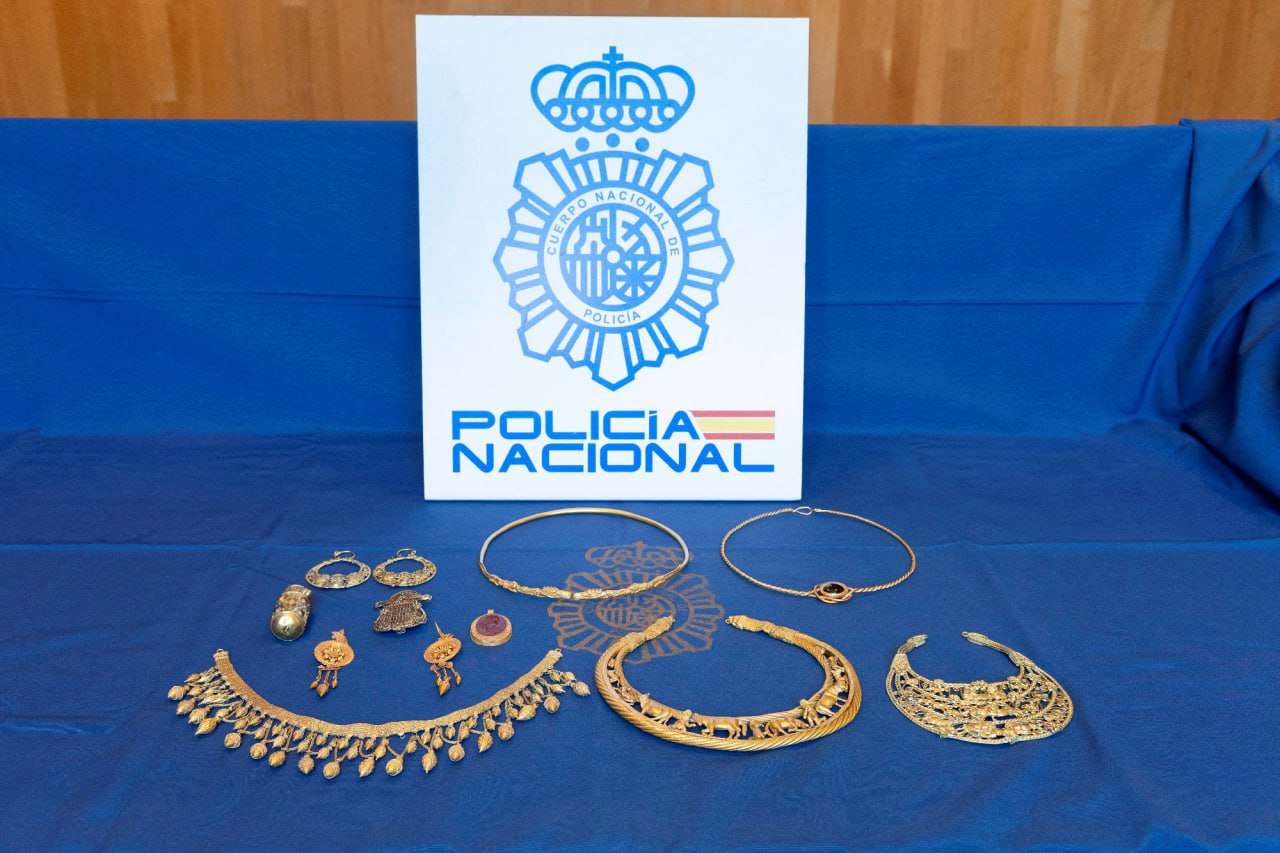Spanish police have recovered 11 gold artefacts valued at over $63,7 million that were stolen from Ukraine and destined for sale in Madrid, the Spanish Interior Ministry reported.
The pieces of Scythian gold had been stolen and smuggled out of Ukraine and were going to be sold in Madrid, according to a police statement. The investigation involved cooperation from Interior Ministry attaches in Bulgaria, Ukraine, Albania, North Macedonia and Cyprus as well as the International Cooperation Division.
"Agents of the National Police, in a joint operation with the Security Service of Ukraine, have seized in Madrid 11 gold pieces belonging to the historical heritage of Ukraine," the statement said. "The agents have arrested five people (three Spanish nationals and two Ukrainian nationals), dismantling a criminal network dedicated to the illicit trafficking of cultural property from Ukraine."
In an effort to launder the origin of the pieces, they were accompanied by documents in Ukrainian, English and Spanish to show they belonged to the Ukrainian Orthodox Church, police said. At the same time, ownership and administration rights were transferred to the main suspect, an Orthodox priest based in Madrid.
The first piece was seized by investigators in 2021, police said. It was a gold ram's head belt deposited in a safe deposit box in Madrid, which the main suspect had sold privately and directly to a Madrid businessman.
The jewelry was previously exhibited in an unnamed Kyiv museum between 2009 and 2013.
All the pieces, which belong to the Greek-Scythian culture of the 8th and 4th centuries BC, are being studied at the National Archaeological Museum and the Institute of Cultural Heritage of Spain, which is why the investigation remains open, authorities said.
Read also:
- Texty: Russian museums refuse to return 110,000 Ukrainian looted treasures
- US Secretary of Treasure announces USD 1.25 billion aid during visit to Kyiv
- Russian plans to “evacuate” treasures from occupied Crimea
- Russians stole treasures from 40 Ukrainian museums, including golden diadem of the Huns





